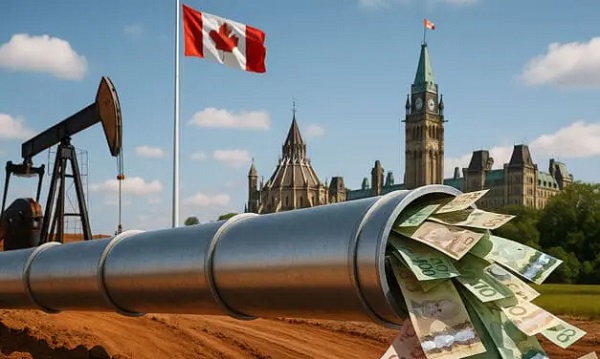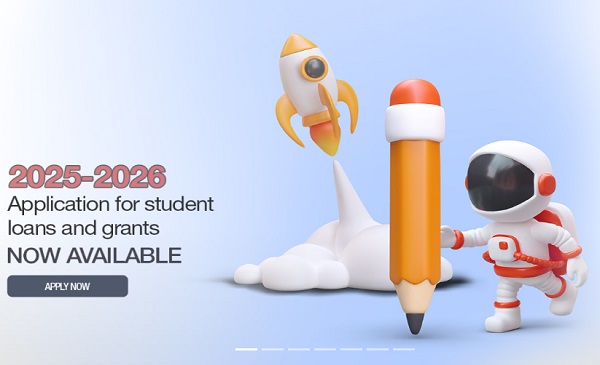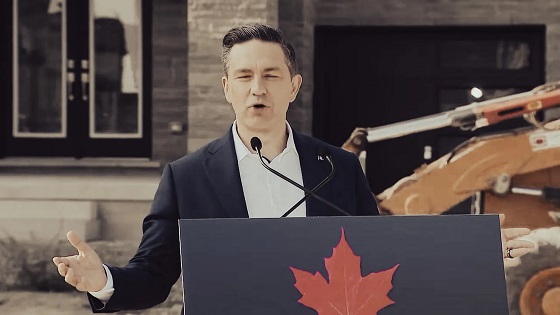Alberta
Big boost for energy companies working on emission reduction innovations

From the Province of Alberta
In October 2019, Emissions Reduction Alberta (ERA) launched the Natural Gas Challenge and invited technology developers to share project concepts for innovation opportunities in Alberta’s natural gas industry.
Alberta’s government is providing $58 million through ERA to support this opportunity to create jobs in the natural gas sector.
Funding recipients include a project that uses artificial intelligence to locate and measure methane emissions, and a project to produce renewable natural gas from biogas at an agricultural facility that will be the first of its kind in Alberta.
The 20 new projects have the potential to reduce a cumulative one million tonnes of emissions by 2030 – the same as taking about 750,000 cars off Alberta’s roads. These projects will also get Albertans back to work by creating more than 750 new jobs when they are needed most.
“Alberta is already a leader when it comes to our environmental footprint, and our ongoing work with Emissions Reduction Alberta will help us become even better.”
Projects were selected through ERA’s competitive review process. Experts in science, engineering, business development, commercialization, financing, and greenhouse gas quantification reviewed 117 submissions and chose projects based on the strongest potential for success.
“With Alberta’s 300-year supply of affordable natural gas, a technically skilled workforce and world-class environmentally responsible facilities, there is tremendous opportunity for Alberta to compete with international markets. Funding opportunities like this, in partnership with Emissions Reduction Alberta, are critical to attracting investments that will grow Alberta’s economy by reducing upfront costs, while reducing our province’s share of global emissions.”
Government funds ERA through the Technology Innovation and Emissions Reduction (TIER) system. TIER is an improved system to help energy-intensive facilities find innovative ways to reduce emissions and invest in clean technology to stay competitive and save money. Facilities can pay into a TIER Fund, which is used for innovative and cleaner Alberta-based projects like those selected under the Natural Gas Challenge.
ERA’s funding model requires that every dollar committed to an initiative is matched or exceeded by additional investments, which ensures there is a market demand for the technology. Government’s $58-million investment through ERA has been more than doubled by private and public investment to stimulate the economy, lower emissions and create jobs, leading to a total of $155 million in funding.
“Investing in the next wave of technological advancements will help Canada’s natural gas industry achieve new efficiencies, reduce costs, and continue to drive world-leading environmental performance.”
A complete list of the successful Natural Gas Challenge projects can be found here.
“We are grateful for ERA’s support to help fund Canadian Natural’s ALT-FEMP project. By working together, we will develop and pilot technologies that can be adopted across the industry to enable early detection of methane emissions through cost-effective methods, ultimately accelerating industry’s reductions in greenhouse gas emissions.”
“This project is an important first step for Alberta, which has all the ingredients to be a leader in the hydrogen economy – including the ability to produce a near zero-emission hydrogen at a lower cost than most jurisdictions in the world.”
Quick facts
- In 2018, Alberta produced almost 70 per cent of the marketable natural gas in Canada.
- ERA works with government, industry and innovators to support technologies that reduce greenhouse gas emissions.
- Since 2009, ERA has committed $607 million in funds from industrial carbon pricing toward 183 projects worth $4.1 billion that are reducing emissions, keeping industries competitive, and leading to new investment opportunities.
- These 183 projects are estimated to deliver cumulative reductions of 34.8 million tonnes of emissions by 2030.
If successful, these technology innovations will lead to cumulative GHG reductions of almost one million tonnes of CO2e by 2030—equivalent to the GHG emissions from 750,000 passenger vehicles driven for one year. It is anticipated these projects will also deliver approximately 760 new jobs.
Funding is being sourced from the carbon price paid by Large Final Emitters in Alberta through the Technology Innovation and Emissions Reduction (TIER) fund.
The following projects were selected for funding:
UPSTREAM PROJECTS:
MultiSensor Canada Inc.
Methane Imaging Solution for Continuous Leak Detection and Quantification for Tank Emissions and Facility Monitoring
Total project value: $3,200,000 | ERA commitment: $1,600,000
Permanent installation and demonstration of an infrared camera at 100 well sites to provide continuous leak detection and quantification for tank emissions and facility monitoring.
Qube Technologies
Emissions Reductions Through Artificial Intelligence
Total project value: $16,200,000 | ERA commitment: $4,000,000
Deployment of an industrial device designed to collect large quantities of data to use artificial intelligence and machine learning techniques to better quantify, locate, and classify emissions.
University of Calgary:
Field-Scale Deployment and Acceleration of Made-In-Alberta Technology for Fugitive Emissions Detection and Reduction
Total project value: $3,200,000 | ERA commitment: $1,600,000
Full-scale, field pilot of a new vehicle-based technology designed for equipment-level emissions screening to support effective regulatory leak detection and repair.
Canadian Natural Resources Limited
Fugitive Emissions Study Using Aerial Detection Technology
Total project value: $1,900,000 | ERA commitment: $930,000
Pilot project of both aerial screening technology and ground-based detection at conventional oil and gas facilities to validate technology performance and inform a broader Alternative Fugitive Emissions Management Program (FEMP).
Challenger Technical Services
Multi Component Downhole Injection System
Total project value: $2,600,000 | ERA commitment: $1,000,000
Development, testing, and validation of a multicomponent downhole injection system that uses epoxy resins to rapidly seal leaking oil and gas wells and eliminate surface casing vent flow.
Petroleum Technology Alliance Canada (PTAC)
Affordable Zero-Emission Fail-Safe Electric Dump Valve Actuator (EDVA) Phase 2
Total project value: $2,200,000| ERA commitment: $550,000
Applied research, prototype design and development, and field pilot testing of an electrically-driven valve actuator that is more compact, powerful, and lower maintenance than alternative pneumatic options.
Kinitics Automation Limited
Valve Actuator for Gas Producers
Total project value: $1,100,000 | ERA commitment: $550,000
Testing a novel electric actuator at 15 well sites in Alberta to validate the technology as a cost effective, technically viable alternative to eliminate venting from established pneumatic devices.
Westgen Technologies Inc
Unlocking EPOD Economic Zero Bleed Pneumatic Instrument Air Retrofit Solution
Total project value: $4,000,000 | ERA commitment: $1,300,000
Demonstration of a solar-hybrid power generation system for remote well sites to provide reliable electricity to prevent gas venting from pneumatic devices in a cost-effective manner.
Modern Wellbore Solutions
Demonstration of a Full-Scale Multilateral Junction Assembly
Total project value: $12,100,000 | ERA commitment: $3,500,000
Full-scale deployment of a multilateral junction tool assembly that will allow natural gas operators to drill, complete, and operate multi-branched wells for unconventional reservoirs. The technology reduces emissions by enabling lateral junctions rather than requiring separate wells.
Tourmaline Oil Corp.
Natural Gas Mobile Unit for Drilling Rig Power Generation
Total project value: $8,000,000 | ERA commitment: $3,200,000
Pilot demonstration of a plug and play, mobile power generation system for drilling rigs that uses smart energy to automatically start and stop generators to match the power demand of the rig.
DOWNSTREAM AND VALUE-ADDED PROJECTS:
ATCO Gas and Pipelines Ltd.
Fort Saskatchewan Hydrogen Blending
Total project value: $5,700,000 | ERA commitment: $2,800,000
Pilot project to test hydrogen blending in ATCO’s Fort Saskatchewan natural gas distribution system. The project will source and test equipment and determine applicability of existing codes, standards, and legislation.
Ekona Power Inc.
Development and Field Testing of a Tri-Generation Pyrolysis (TGP) System for Low-cost, Clean Hydrogen Production
Total project value: $13,800,000 | ERA commitment: $5,000,000
Prototyping a new approach to converting natural gas to hydrogen and a solid carbon by-product representing a new pathway to produce zero-emissions hydrogen, electricity, and other products by decarbonizing natural gas.
Standing Wave Reformers Inc.
A New Wave in Hydrogen Production
Total project value: $8,200,000 | ERA commitment: $3,000,000
Design optimization, system integration, pilot demonstration, techno-economic analysis, and advancement of commercial deployment plans for a technology system to decarbonize natural gas.
ATCO Gas and Pipelines Ltd.
ATCO and Future Fuel RNG
Total project value: $15,900,000 | ERA commitment: $7,900,000
First-of-its-kind commercial demonstration to produce renewable natural gas (RNG) to be sold and used within the province in Compressed Natural Gas (CNG) fleet vehicles and commercial applications.
Sustainitech Inc.
Co-Locating Natural Gas and Indoor Agriculture for Alberta’s Future
Total project value: $17,900,000 | ERA commitment: $5,000,000
Design, construction, and operation for a first-of-kind commercial deployment of a modular farming system that combines automation, hydroponics, adsorption cooling, and advanced lighting to grow crops.
Enersion Inc.
Greenest Natural Gas-Powered Quad-generation with a 41% GHG Reduction
Total project value: $3,800,000 | ERA commitment: $1,800,000
Technology that uses natural gas to generate electricity, cooling, and heating in an integrated package for multiple applications, including industrial, agricultural, commercial, and residential sectors
Stone Mountain Technologies, Inc.
Demonstration of Thermally Driven Heat Pumps for Residential Heating Applications
Total project value: $2,000,000 | ERA commitment: $990,000
Design and prototyping of technology that uses natural gas to drive a heat pump cycle. Unlike electrically-driven heat pumps, the technology is ideal for cold climates.
Anax Power
Turboexpander Project
Total project value: $6,200,000 | ERA commitment: $2,400,000
Installation and operation of technology that provides clean, distributed electricity from the pressure and flow of natural gas without combustion.
Innovative Fuel Systems
Advanced Dual-Fuel System Commercial Demonstration
Total project value: $2,800,000 | ERA commitment: $1,200,000
Commercial validation of technology that allows heavy duty truck engines to displace up to 50 per cent of their diesel with cleaner burning natural gas.
Converting Landfill Gas to Renewable Natural Gas
Total project value: $25,000,000 | ERA commitment: $10,000,000
The project will explore opportunities to upgrade landfill gas (LFG) at Clover Bar Landfill and inject it into Alberta’s natural gas system as renewable natural gas (RNG). Stakeholders in the Clover Bar Landfill, the City of Edmonton and Capital Power, are exploring these possible opportunities.
All recipients are required to produce a final outcomes report that will be shared publicly for the broader benefit of Alberta. All projects involve field piloting, demonstration, or commercial deployment of technology within the province.
Click the links below for more details on ERA’s Natural Gas Challenge:
- Full Project Proposal Guidelines
- Call for Expressions of Interest Guidelines
- Eligible Expense and Cost Instructions
- Privacy, Confidentiality, Data, and Security Policy
- Frequently Asked Questions
- Watch the Informational Webinar
- Learn more about ERA’s funding process.
WHY TARGET THE NATURAL GAS VALUE CHAIN?
Natural gas is a critical resource, providing heat and power for Alberta’s residential, commercial, and industrial sectors. It is the least GHG emitting of traditional fossil fuels, and a global shift toward natural gas from coal- and oil‑based resources is underway.
Canada is the fourth largest natural gas producer in the world, with net exports totaling $6.1 billion in 2018. Alberta produces almost 70 per cent of the marketable natural gas in the country. In 2017, the province emitted 35 million tonnes of CO2e from natural gas production and processing. A significant opportunity exists to improve cost competitiveness along Alberta’s natural gas value chain and reduce GHG emissions.
The Government of Alberta is committed to revitalizing Alberta’s natural gas sector. The province is developing and implementing a robust strategy with key recommendations from the 2018 Roadmap to Recovery Report, a document advising the government on reviving Alberta’s natural gas industry.
Alberta
Equalization program disincentivizes provinces from improving their economies

From the Fraser Institute
By Tegan Hill and Joel Emes
As the Alberta Next Panel continues discussions on how to assert the province’s role in the federation, equalization remains a key issue. Among separatists in the province, a striking 88 per cent support ending equalization despite it being a constitutional requirement. But all Canadians should demand equalization reform. The program conceptually and practically creates real disincentives for economic growth, which is key to improving living standards.
First, a bit of background.
The goal of equalization is to ensure that each province can deliver reasonably comparable public services at reasonably comparable tax rates. To determine which provinces receive equalization payments, the equalization formula applies a hypothetical national average tax rate to different sources of revenue (e.g. personal income and business income) to calculate how much revenue a province could generate. In theory, provinces that would raise less revenue than the national average (on a per-person basis) receive equalization, while province’s that would raise more than the national average do not. Ottawa collects taxes from Canadians across the country then redistributes money to these “have not” provinces through equalization.
This year, Ontario, Quebec, Manitoba and all of Atlantic Canada will receive a share of the $26.2 billion in equalization spending. Alberta, British Columbia and Saskatchewan—calculated to have a higher-than-average ability to raise revenue—will not receive payments.
Of course, equalization has long been a contentious issue for contributing provinces including Alberta. But the program also causes problems for recipient or “have not” provinces that may fall into a welfare trap. Again, according to the principle of equalization, as a province’s economic fortunes improve and its ability to raise revenues increases, its equalization payments should decline or even end.
Consequently, the program may disincentivize provinces from improving their economies. Take, for example, natural resource development. In addition to applying a hypothetical national average tax rate to different sources of provincial revenue, the equalization formula measures actual real-world natural resource revenues. That means that what any provincial government receives in natural resource revenue (e.g. oil and hydro royalties) directly affects whether or not it will receive equalization—and how much it will receive.
According to a 2020 study, if a province receiving equalization chose to increase its natural resource revenues by 10 per cent, up to 97 per cent of that new revenue could be offset by reductions in equalization.
This has real implications. In 2018, for instance, the Quebec government banned shale gas fracking and tightened rules for oil and gas drilling, despite the existence of up to 36 trillion cubic feet of recoverable natural gas in the Saint Lawrence Valley, with an estimated worth of between $68 billion and $186 billion. Then in 2022, the Quebec government banned new oil and gas development. While many factors likely played into this decision, equalization “claw-backs” create a disincentive for resource development in recipient provinces. At the same time, provinces that generally develop their resources—including Alberta—are effectively punished and do not receive equalization.
The current formula also encourages recipient provinces to raise tax rates. Recall, the formula calculates how much money each province could hypothetically generate if they all applied a national average tax structure. Raising personal or business tax rates would raise the national average used in the formula, that “have not” provinces are topped up to, which can lead to a higher equalization payment. At the same time, higher tax rates can cause a decline in a province’s tax base (i.e. the amount of income subject to taxes) as some taxpayers work or invest less within that jurisdiction, or engage in more tax planning to reduce their tax bills. A lower tax base reduces the amount of revenue that provincial governments can raise, which can again lead to higher equalization payments. This incentive problem is economically damaging for provinces as high tax rates reduce incentives for work, savings, investment and entrepreneurship.
It’s conceivable that a province may be no better off with equalization because of the program’s negative economic incentives. Put simply, equalization creates problems for provinces across the country—even recipient provinces—and it’s time Canadians demand reform.
Alberta
Provincial pension plan could boost retirement savings for Albertans

From the Fraser Institute
By Tegan Hill and Joel Emes
In 2026, Albertans may vote on whether or not to leave the Canada Pension Plan (CPP) for a provincial pension plan. While they should weigh the cost and benefits, one thing is clear—Albertans could boost their retirement savings under a provincial pension plan.
Compared to the rest of Canada, Alberta has relatively high rates of employment, higher average incomes and a younger population. Subsequently, Albertans collectively contribute more to the CPP than retirees in the province receive in total CPP payments.
Indeed, from 1981 to 2022 (the latest year of available data), Alberta workers paid 14.4 per cent (annually, on average) of total CPP contributions (typically from their paycheques) while retirees in the province received 10.0 per cent of the payments. That’s a net contribution of $53.6 billion from Albertans over the period.
Alberta’s demographic and income advantages also mean that if the province left the CPP, Albertans could pay lower contribution rates while still receiving the same retirement benefits under a provincial pension plan (in fact, the CPP Act requires that to leave CPP, a province must provide a comparable plan with comparable benefits). This would mean Albertans keep more of their money, which they can use to boost their private retirement savings (e.g. RRSPs or TFSAs).
According to one estimate, Albertans’ contribution rate could fall from 9.9 per cent (the current base CPP rate) to 5.85 per cent under a provincial pension plan. Under this scenario, a typical Albertan earning the median income ($50,000 in 2025) and contributing since age 18, would save $50,023 over their lifetime from paying a lower rate under provincial pension plan. Thanks to the power of compound interest, with a 7.1 per cent (average) nominal rate of return (based on a balanced portfolio of investments), those savings could grow to nearly $190,000 over the same worker’s lifetime.
Pair that amount with what you’d receive from the new provincial pension plan ($265,000) and you’d have $455,000 in retirement income (pre-tax)—nearly 72 per cent more than under the CPP alone.
To be clear, exactly how much you’d save depends on the specific contribution rate for the new provincial pension plan. We use 5.85 per cent in the above scenario, but estimates vary. But even if we assume a higher contribution rate, Albertan’s could still receive more in retirement with the provincial pension plan compared to the current CPP.
Consider the potential with a provincial pension contribution rate of 8.21 per cent. A typical Albertan, contributing since age 18, would generate $330,000 in pre-tax retirement income from the new provincial pension plan plus their private savings, which is nearly one quarter larger than they’d receive from the CPP alone (again, $265,000).
Albertans should consider the full costs and benefits of a provincial pension plan, but it’s clearly Albertans could benefit from higher retirement income due to increased private savings.
-

 espionage2 days ago
espionage2 days agoInside Xi’s Fifth Column: How Beijing Uses Gangsters to Wage Political Warfare in Taiwan — and the West
-

 Censorship Industrial Complex2 days ago
Censorship Industrial Complex2 days agoDecision expected soon in case that challenges Alberta’s “safe spaces” law
-

 Education2 days ago
Education2 days agoOur kids are struggling to read. Phonics is the easy fix
-

 International2 days ago
International2 days agoBrazil sentences former President Bolsonaro to 27 years behind bars
-

 Energy1 day ago
Energy1 day agoThe IEA’s Peak Oil Fever Dream Looks To Be In Full Collapse
-

 Crime1 day ago
Crime1 day agoTransgender Roomate of Alleged Charlie Kirk Assassin Cooperating with Investigation
-

 COVID-191 day ago
COVID-191 day agoWhy FDA Was Right To Say No To COVID-19 Vaccines For Healthy Kids
-

 Crime19 hours ago
Crime19 hours agoDown the Charlie Kirk Murder Rabbit Hole





